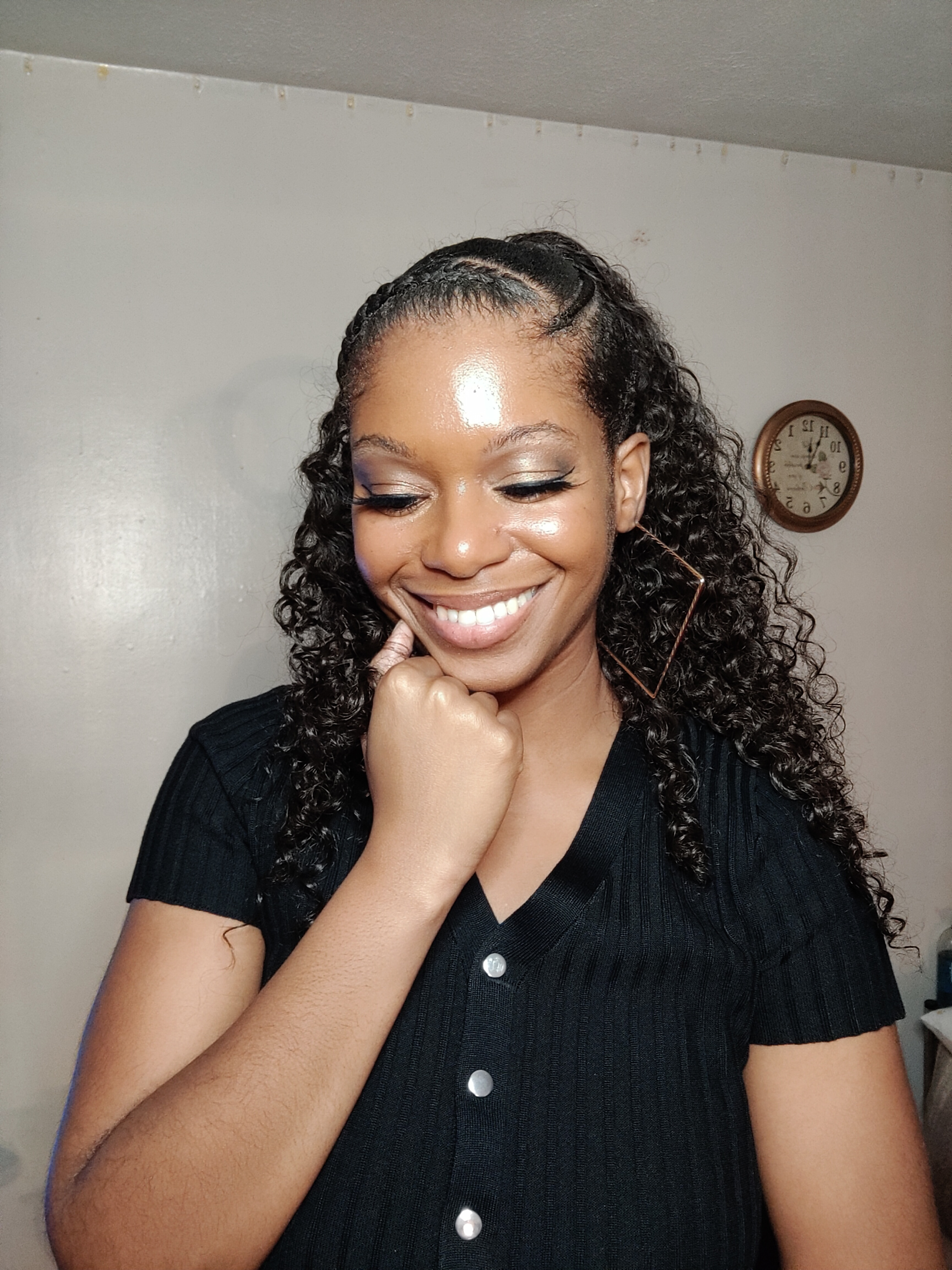What is Realistic Fiction: Definition, Traits, and Writing Tips

When people ask me, “What is realistic fiction? ” I mean stories that highlight real-world scenarios, including stories that feel like they could happen to anyone. My life is real, and so is yours. Turn those into stories and you have realistic fiction!
Realistic fiction distinguishes itself as the opposite of magical and otherworldly things (both of which I love). It is a genre that takes place in a world that most, if not all, humans are familiar with.
This genre is important because it explores the many ways humans struggle and overcome their realities. It also provides a different source of familiarity compared to other genres, like fantasy.
For example, whenever I’m reading a realistic fiction book, regardless of how much I relate to or identify with the main character, I get to temporarily see the real world through their eyes. I felt this way reading The Catcher in the Rye. Holden’s character is a snarky and cynical young man, but I understood why he saw the world the way he did.
So, what is realistic fiction and why should you care?
Read on to find out how I use the various beautiful and ugly sides and circumstances of the human condition to write realistic fiction!
What is Realistic Fiction?

Some key characteristics of realistic fiction include:
- Inclusion of real-world perspectives (i.e. racial, ethnic, gender, social class, etc.)
- Topics outside of your expertise are carefully researched (e.g. writing a story about soccer, but you’re a novice on the subject)
- Story resolutions center around believability, not idealism (reality doesn’t always have a fairy tale ending, so don’t sidestep harsh truths even if it’s fiction!)
- Emphasizes contemporary society, or is a story culturally relevant to its time period (e.g. writing a war story about a country afflicted by it at the time)
- Believable characters who are realistically similar to you, or whom you can imagine encountering in the world (e.g. a neighbor who has cancer, or a homeless individual living on the streets)
When analyzing “what is realistic fiction” as a genre, I include specific settings, characters, and narratives based on my stories’ purpose. Why am I writing my story, and who is it for? If my story is not believable, it won’t resonate with those I’m trying to reach.
For example, if I write about a character whose foot gets stuck in a swamp swarming with alligators, do I think my character would cozy up to one if they weren’t already an experienced wrangler?
As someone who has spent time in Florida, I can tell you that although these large reptiles regularly creep into backyards like old friends, I’m also not going to relax around one like I would a dog or cat. I cherish my limbs, thank you.
Characteristics of Realistic Fiction

Emphasis on Believability
When writing realistic fiction, the crux of your story should be making it believable. This is crucial for writing a compelling tale that touches the hearts of my readers and immerses them in your setting, characters, and overall plot.
Realistic Setting
So, what is realistic fiction portrayed as in the world-building department? It means having a setting that people are actually familiar with. This is not the genre you or I get to craft magical worlds where dragons, aliens, fairies, or flying broomsticks exist. Save that for fantasy.
Although their existence is debatable to some (aka, me), most people agree these are not things we see in our everyday lives. Keep your stories grounded on Earth for this particular genre.
Believable Characters
Have any of your friends or relatives been accused of being “grinches”? I know some family members who are like that. They don’t have green fur, but they sure do grunt a lot and love their little dogs.
This is the difference between being “like” something and actually “being” that something.
So, when writing believable characters in realistic fiction, I keep it aligned with what I’ve observed in my own life and the lives of others.
Compelling and Believable Stories
Realistic fiction is a great genre for presenting the variety found in the human experience. On some days, I hear about people getting married.
On other days, I get to experience the death of a loved one. It’s all so dandy, right?
Humans are multifaceted beings who never have smooth-sailing lives all the way through. I incorporate my characters’ ups and downs in my stories and am not afraid of making them messy and imperfect. That’s who humans are. Nothing more, nothing less.
Ultimately, what is realistic fiction if it doesn’t have believable settings, characters, and plots that twist and tumble as we do? Not authentic, that’s for sure.
Examples of Realistic Fiction

Realistic fiction is not bound to one type of era/setting, character, or social issue. Many subgenres, such as historical fiction, contemporary fiction, and social realism, present numerous ways to write relevant and realistic stories for audiences.
Historical Fiction
For example, when I was a kid, I read Bud, Not Buddy by Christopher Paul Curtis. It is a historical fiction story about a young orphan boy named Bud who faced racism and prejudice during the Great Depression era.
However, despite its somber undertone, I loved the story’s heartwarming moments about overcoming struggles and finding joy in life, music, and newfound friendships.
In sum, historical fiction uses past human events to reinterpret a certain time or event through a different lens or perspective readers may not have considered.
Contemporary Fiction
In comparison, contemporary fiction is presented in stories like Tangerine by Edward Bloor.
This story is about a young boy who loves to play soccer but is visually impaired. The book takes place in Tangerine, Florida where various terrible events occur at the main character’s school. One boy ends up dying from a lightning strike, classrooms fall into sinkholes, and family drama arises between the main character and his older brother.
I remember reading this book when I was younger and how terrifyingly real it felt as someone who frequently visits Florida. Sinkholes are quite common here and thunder booms so loud, it sometimes feels like it might shatter my bedroom window. Tangible fears like this are key components of writing realistic fiction.
Social Realism
Another type of realistic fiction is social realism.
In college, I read Gone Girl by Gillian Flynn for the first time. Although it’s a murder mystery surrounding a dysfunctional Midwestern couple, it tackles the very real social topics of relationships, gender norms, class disparity, and the ways media shapes our view of the world and people around us.
This story’s use of a dual point of view of the husband and wife had me questioning which characters were truly wrong, right, or maybe neither at all.
Books like these and even stories like One Crazy Summer by Rita Williams-Garcia, which is about three sisters who find out their mother is a member of the Black Panther Party, all ground their readers in a believable experience.
These stories incorporate core aspects of emotionally resonating fiction with characters and circumstances that remind us of who we’ve been, who we are, and who we can realistically become.
Although these subgenres may intersect with shared themes and portrayals of past and ongoing social issues and real-world experiences, the core heart of their story is what makes them realistic fiction.
They are relatable and genuine experiences, that although imaginary, are very much possible and defining of the world humans live in.
Expert Tips for Writing Realistic Fiction

Authentic Setting
Furthermore, what is realistic fiction if not grounded in thorough research on the subject of my story? Even if I have personally experienced the events presented in my story, not everyone will share the same viewpoints on the matter as I do.
Additionally, when crafting detailed settings/environments for your story, here are some tips to keep in mind:
- Immerse the reader’s senses by paying attention to what makes the setting unique yet familiar. (e.g. How does a supermarket in the U.S. compare to one in the U.K.? What makes these cultural settings distinct from the other?)
- Look for clues in my setting that indicate when a story takes place. (e.g. If I don’t know the exact year it’s taking place, then I think about what political leaders are currently in power in this timeline. What movies, fashion styles, and technology exist in my story’s time?)
- Find real-world images/videos for places I don’t live in or have never been to. (e.g. If I know nothing about a city halfway across the world, I refer to travel blogs, history books, and documentaries about said place for realistic perspectives).
Relatable Characters
In realistic fiction, complex characters cannot hinder your writing due to imperfection. Humans are often walking contradictions, so I write characters who reflect that.
For example, a character’s actions often reflect their values, motivations, upbringing, etc. However, just as in real life, we all grow and change, even if only slightly at times.
As a child, I had a friend who spoke without a filter. She was often very loud and ended up in trouble with our teachers. But she was also a sweet and supportive friend to me. See? Reality is nuanced.
One aspect of a person is not their whole identity; everyone has strengths and shortcomings that we are both proud and embarrassed of, even if we don’t admit it to ourselves. It’s important to remember that when writing relatable characters.
Likewise, when creating authentic dialogue, it’s crucial to acknowledge that characters and people don’t always mean what they say.
For example, an authentic conversation between someone who is inviting their friend out to dinner might go like this:
“Care to join me for pasta tonight?” Abby said to her friend sitting on the couch.
Beatrice scrunched her nose. She didn’t want to go out. She was too invested in the movie she was watching and was perfectly happy with the popcorn in her lap. “Is it just us?” she replied.
In this exchange, the genuineness of the conversation is presented in how Beatrice doesn’t want to go out. However, she also does not want to be dismissive of her friend, so she pivots to inquire whether Abby can eat with someone else instead.
Essentially, a person’s thoughts don’t always match what they express, especially when their preferences and values conflict with each other.
Compelling Conflict
I, and probably many of us, have already learned about the main types of story conflict:
- Man vs. Man
- Man vs. Society
- Man vs. Nature
- Man vs. Self
While these types are more general, they do provide a baseline for what makes a conflict compelling.
For instance, Man vs. Man (or human vs. human), involves a direct conflict between two individuals; e.g. “hero” versus “main antagonist.”
Man vs. Society is a much broader form of conflict in which a character opposes a group of individuals or societal structures; e.g. “hero” versus “government.”
Man vs. Nature, however, is not a conflict between humans or human systems but a character’s conflict against the natural world or things out of anyone’s direct control; e.g. “hero” versus “hurricane.”
Then, we have Man vs. Self, which is the psychological conflict a character holds within themselves; e.g. “hero” versus “inner demons.”
While the first three types, plus the fourth, represent external and internal conflict respectively, all are necessary to craft a realistic fiction story that reflects humanity’s constant struggles.
So, what is realistic fiction in the context of actually resolving conflict and giving my characters the ability to grow? I start by aligning my character’s current capabilities and mindset with the outcome they must face.
For example, in a war story, would the hero walk away from a battle physically unscathed by their opponent? Very unlikely, seeing as I can’t even walk around my house without stubbing my toe.
If they did, would there also be no political, environmental, or psychological consequences either? Not likely.
Therefore, I resolve my story and give my characters growth that aligns with what they know and what they have realized thus far in the narrative.
Research
Say I write a realistic fiction story about what happens to someone after a car crash. My portrayal of that experience will be very different from others depending on the severity of the crash they or I have experienced.
If I walk away with just a scrape or mental trauma, is that the same experience as someone else who was permanently paralyzed?
Researching my topic provides nuance and balance to whatever I choose to write about. I do this by consulting reliable sources or people with first-hand experience to give me as accurate a portrayal as possible.
And no, referring to other fictional books or movies does not count as reliable sources. Being dramatic does not make something true.
Maintaining Authenticity
This aspect also relates to research. If I am not adequately knowledgeable on the subject I’m writing about, then my story is not authentic.
For example, writing about blindness and portraying it through my conjecture alone won’t sit well with certain audiences who have lived with blindness or know someone who has. My vision may suck at times, but that doesn’t make me blind.
Responsibility in Realistic Fiction

Additionally, if I do write about sensitive topics, such as women, people of color, the elderly, low-income individuals, disabled people, LGBTQ+ individuals, etc.), I take caution with how my portrayal of them comes across.
Even if I mean well, I would run it by someone who knows more about the topic than me and see how it makes them feel first. There’s nothing wrong with being considerate of those potentially affected by my or your story’s interpretation.
Likewise, writing realistic fiction that conveys diverse perspectives is crucial to connecting with my readers. However, it’s also a chance to learn more about issues that affect real-world individuals I may not have considered before.
Realistic fiction needs diverse perspectives because no two people are the same, and pretending they are in the context of my story is not an authentic experience for the readers I hope to impact.
Final Thoughts

So, what is realistic fiction? It makes the livable, breathable world real to your readers.
It incorporates grounded settings and characters who are relatable to you and me, but it also acknowledges that people exist on a wide spectrum of values, viewpoints, beliefs, and experiences.
Whether it’s a tale that’s all too real to you, or a tale that’s real to someone else, realistic fiction will teach you something about yourself and the broader society we inhabit, whether you are the writer or the reader.
Realistic fiction empowers people from all walks of life to see themselves and others in diverse lights. It’s not just about human tragedies and mistakes but also our triumphs and possibilities.
Regardless of your realistic fiction story topic, seek to convey the horrific and uplifting aspects of the human experience, not just one side. This genre is a mixture of diverse people and a mixture of tries that guide us forward. That’s what makes it real.
Keep striving, writers.
Until next time!
Are you an aspiring writer who wants to become Tarafied and share your story? Or do you have a book inside of you but don’t know where to begin the publishing process?
Book a Complementary Call, HERE.
Frequently Asked Questions
Realistic fiction is different from other genres because it focuses on everyday events and experiences that could happen in the real world. Unlike fantasy or science fiction, realistic fiction does not involve magical elements, futuristic technology, or supernatural occurrences.
While realistic fiction can be inspired by real events, it is not the same as historical fiction or a biography. The story and characters are fictional, but they mirror real-life situations and behaviors to create a sense of authenticity.
Realistic fiction usually features relatable characters, believable dialogue, reasonable events, and contemporary settings. The themes often center on universal human experiences like love, friendship, family, or personal growth.
To create authentic characters, focus on their internal motivations, flaws, and emotions. Develop backstories that explain why they make certain choices and use dialogue that reflects real conversations people might have in similar situations.
Related Articles
Show, Don’t Tell Examples: A Complete Guide for Effective Writing
Plugin designed by RofiTech









